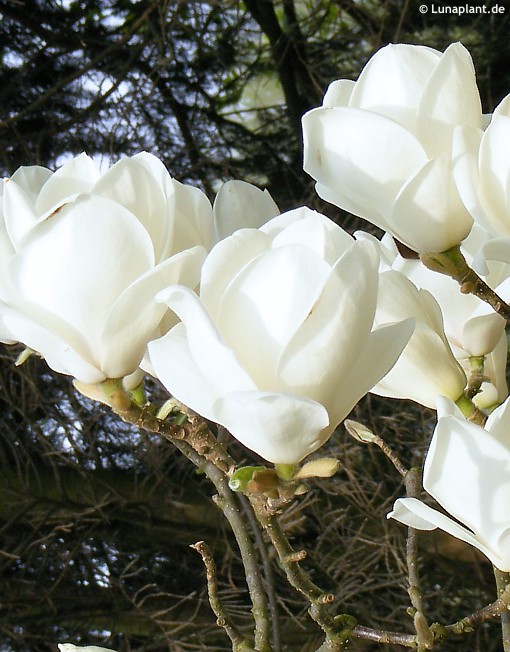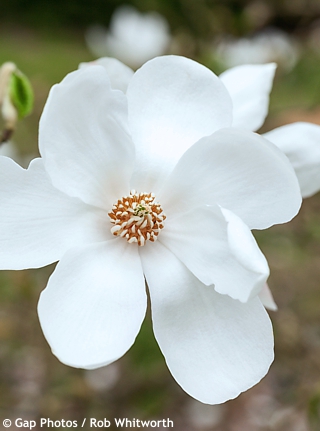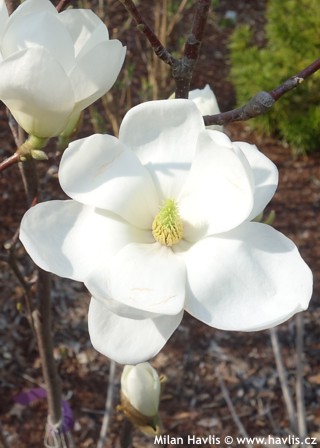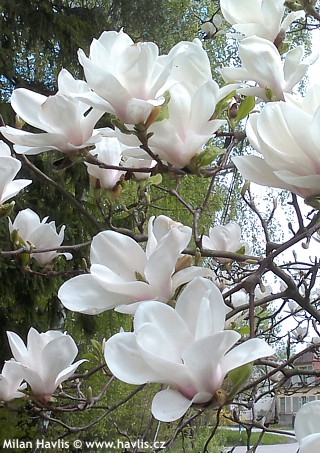Magnolia x soulangeana 'LENNEI ALBA' saucer magnolia
Lennei Alba is probably the most successful white blooming variety of saucer magnolia. It produces medium large, fragrant flowers of creamy-white colour from the first warm days of April. It is a back cross of magnolia x soulangeana Lennei and Yulan magnolia. Being quite early to flower it is recommended to avoid the warmest and protected sites and let it feel the chilly spring breeze owing to which it will not open its flowers precociously. Deciduous leaves are rather obovate with a notable tip, medium sized, mid to dark green. It grows moderately, about 4m tall and wide.
Magnolias are not supposed to be pruned. You can prune old shrubs if ill, or trim them to shape or to reduce size, or make an elementary cut to young plants of unsightly or unhealthy appearance. Do this as soon as possible after flowering to secure setting of flower buds for the following year. Be aware that each magnolia can respond differently to pruning.
Deciduous magnolias are quite easy plants. All they need is light, well-drained, acidic soil with equal moisture throughout the year. Once established they can do with occasional drought but will not look as nice as the ones with regular watering. Just pay attention to how to plant your magnolia. First, find it a spot where it will live forever and ever. It does not like transplanting. And as it makes shallow roots reaching well over its spread stay away from disturbing the roots by digging or messing about around it. Just cover the soil with bark mulch and do not plant anything else near it after say the second year after planting onwards. You could damage the very important top roots that absorb maximum moisture and nutrients from the soil. Also avoid planting magnolia too deep. Thus you could be digging its grave. Keep it mulched at all times in order to retain constant moisture. It is fully hardy to about -29°C (USDA zone 5).
Last update 09-02-2013








































